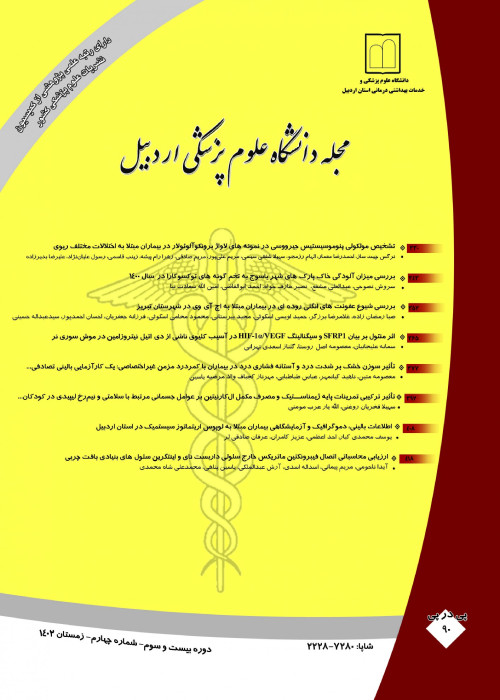The study of diabetic foot infection: bacteriology, antimicrobial resistance pattern, treatment and outcome in inpatient cases in Rasoul-Akram and Firoozgar hospitals, 2005-2006
Abstract:
Background And Objectives
Because of diminished inflammatory responses to microbial invasion, the identification and diagnosis of diabetic foot infections remains a complex problem. The aim of this study was to determine the bacterial agents of diabetic foot infection and their antimicrobial susceptibility pattern. Additionally the percent of infections that were lead to amputation was determined.Methods
This retrospective study was conducted on a cross sectional basis at two teaching hospitals. Documents belonging to patients with diabetic foot infections in stages III and IV were studied. All demographic information, clinical manifestations, culture results, outcome of infection and other necessary data were recorded in special data sheets. The SPSS 13 statistical software was used for analyzing data. Statistical significance was assayed by Student's t-test and chi2. The differences were considered to be significant at the p< 0.05 level.Results
Fifty two patients were selected, 36 patients (69.2%) were male. The mean age of patients was 60±12.8 years, and the mean duration of diabetes was 17±10.6 years. Amputation was done in 29 patients, and a significant correlation was found between duration of diabetes and amputation (p= 0.04). The most frequently isolated pathogens were Staphylococcus aureus (38.46%) E. coli (15.4%), coagulase negative staphylococci (13.5%), and proteus spp (13.5%). Antimicrobial susceptibility results showed that 55% of Staphylococcus aureus isolates were resistant to methicillin. All the Staphylococcus aureus and coagulase negative Staphylococci isolates were sensitive to vancomycin. 100% and 87.5% of E. coli isolates were resistant to ceftriaxone and ceftazidime respectively. All Pseudomonas aeruginosa isolates were sensitive to ceftazidime.Conclusion
More than half of patients with diabetic foot infection were under amputation and there was significant correlation between amputation and duration of diabetes, so prevention of foot ulcer is very important in those patients. The results showed that the most isolates were resistance against common antibiotics and antibiogram is the best way to choose appropriate therapy in these patients.Language:
Persian
Published:
Journal of Ardabil University of Medical Sciences, Volume:10 Issue: 37, 2010
Page:
232
magiran.com/p816241
دانلود و مطالعه متن این مقاله با یکی از روشهای زیر امکان پذیر است:
اشتراک شخصی
با عضویت و پرداخت آنلاین حق اشتراک یکساله به مبلغ 1,390,000ريال میتوانید 70 عنوان مطلب دانلود کنید!
اشتراک سازمانی
به کتابخانه دانشگاه یا محل کار خود پیشنهاد کنید تا اشتراک سازمانی این پایگاه را برای دسترسی نامحدود همه کاربران به متن مطالب تهیه نمایند!
توجه!
- حق عضویت دریافتی صرف حمایت از نشریات عضو و نگهداری، تکمیل و توسعه مگیران میشود.
- پرداخت حق اشتراک و دانلود مقالات اجازه بازنشر آن در سایر رسانههای چاپی و دیجیتال را به کاربر نمیدهد.
In order to view content subscription is required
Personal subscription
Subscribe magiran.com for 70 € euros via PayPal and download 70 articles during a year.
Organization subscription
Please contact us to subscribe your university or library for unlimited access!


